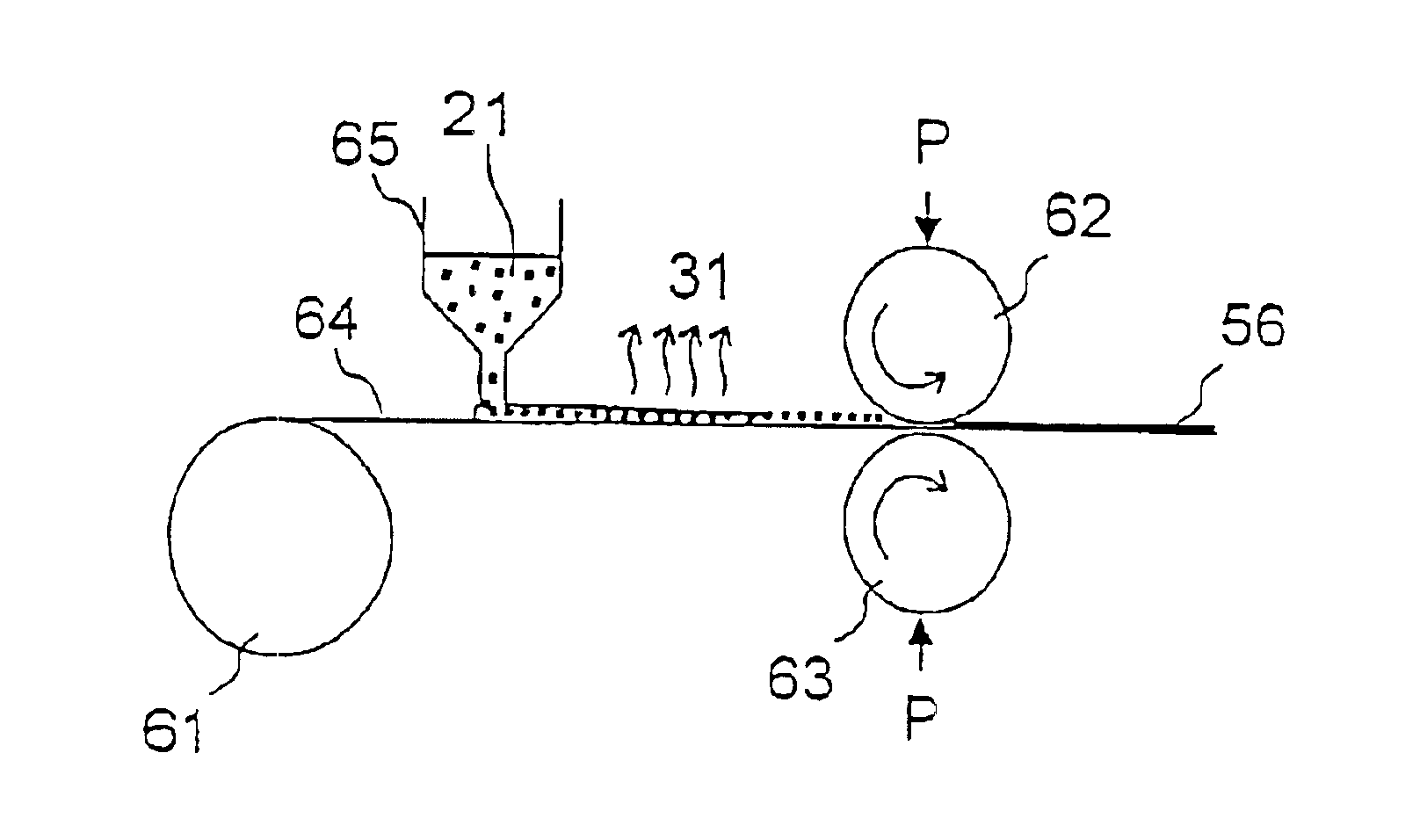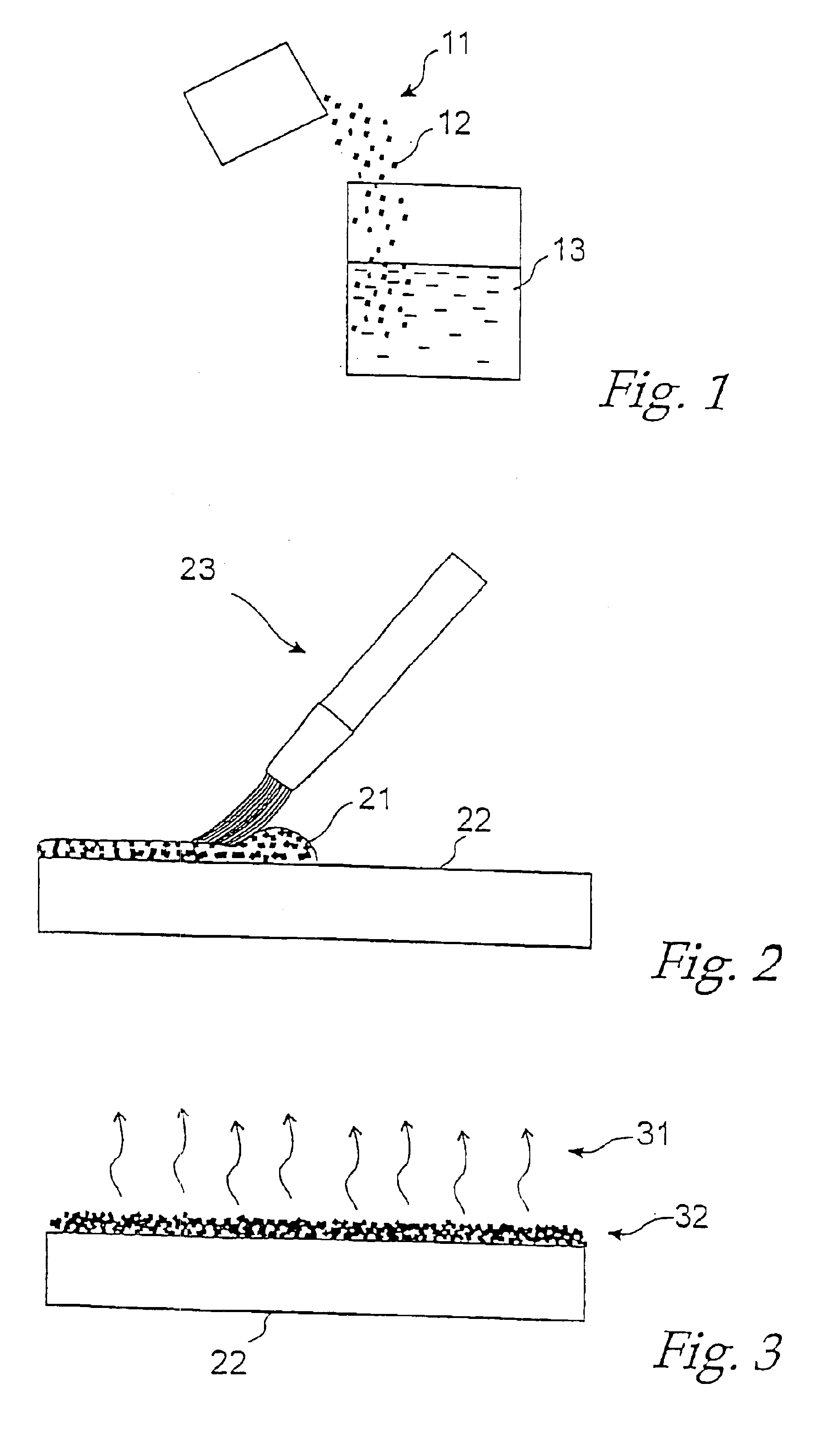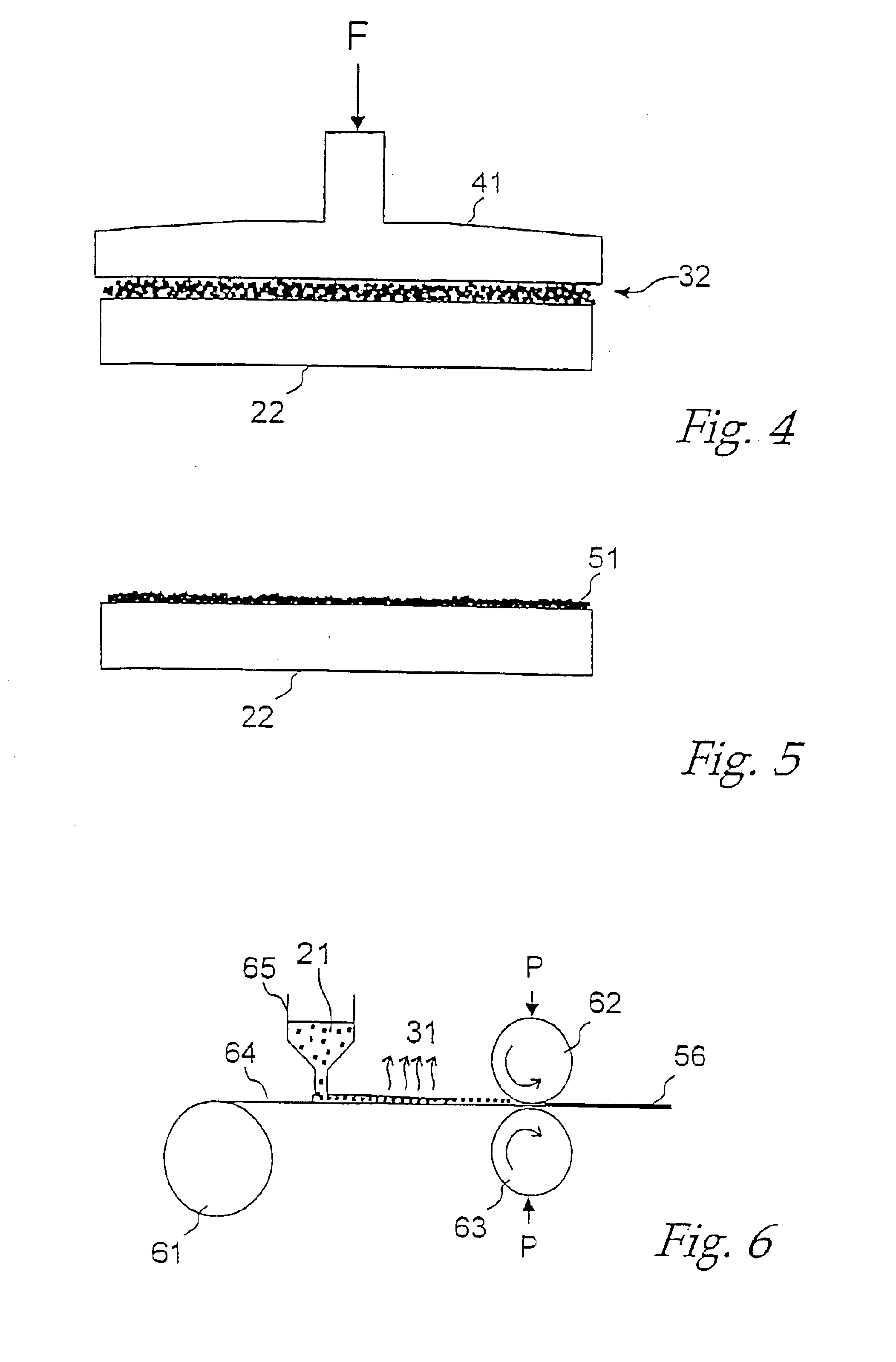Method for manufacturing nanostructured thin film electrodes
a thin film electrode and nanostructure technology, applied in photovoltaic energy generation, electrical equipment, electrolytic capacitors, etc., can solve the problems of limiting the choice of substrate materials, time and cost consumption in each step, and the method of forming nanostructured films is often time-consuming and cost-intensive. , to achieve the effect of shortening the process tim
- Summary
- Abstract
- Description
- Claims
- Application Information
AI Technical Summary
Benefits of technology
Problems solved by technology
Method used
Image
Examples
experiment 1
[0053]The conducting substrate was a “Tec 8” supplied by Hartford Glass Co, Inc. and consisted of a 10 cm×10 cm×3 mm soda lime glass sheet coated with a conducting layer of fluorine doped tin oxide of 8 ohm / cm2 resistivity. A suspension was prepared by adding 20% by weight TiO2 particles (Degussa P25) to ethanol. The suspension was applied to a thickness of 50 μm onto the conducting layer by brush application. The ethanol was allowed to evaporate to the air, and a 50 μm thick separating film of aluminum foil was draped on the particle layer. The assembly consisting of substrate, particle layer and separating film was placed between two planar stainless steel plates. A pressure of 300 kg / cm2 was applied on the assembly via the steel plates, to achieve a nanostructured film of appr. 55% porosity.
[0054]Then, the experiment above was repeated with new substrates, varying the pressure within 100-1000 kg / cm2. Thereby, the porosity achieved varied within appr. 50-60%, the higher the pressu...
experiment 2
[0055]In another experiment a 5 cm×5 cm×0.2 mm conducting plastic substrate was used. The substrate was cleaned using a laboratory detergent “RBS 25” supplied from Labkemi. The preparation and application of the suspension was performed in the same way as the experiment described above. The ethanol was allowed to evaporate in air and a 25 μm thick separating film of low density polyethylene was draped on the particle layer. The film was compressed in the same manner as described in the experiment above, with the exception that the applied pressure was 1000 kg / cm2.
End of the Experiment 2
[0056]The method according to the invention to produce a nanostructured porous electrode has numerous advantages with respect to prior art methods. These advantages are mainly due to the fact that the method does not involve the use of a binder to temporarily or permanently bind the electrode particles. Such a binder, for example a polymer solved in a solvent or a wax, is both costly and requires a fi...
experiment 3
[0074]In another exemplifying experiment several stacked nanostructured layers were deposited onto a plastic substrate. The plastic substrate was a 5 cm×5 cm×0.175 mm “ITO-60” sheet supplied by IST (Innovative Sputtering Technology). A first layer of a nanostructured TiO2 film was deposited on the plastic film in the same manner as described in Experiment 2 above, with the exception that the suspension was applied to a thickness of 100 μm and the pressure applied was 1500 kg / cm.
[0075]In the next step, a suspension was prepared by mixing 40% by weight TiO2 powder (“Tioxide A-HR supplied by Huntsman) to ethanol. The second suspension was stirred with a magnetic stirrer for several hours and then applied onto the first layer to a thickness of 50 μm. The ethanol from the second layer was allowed to evaporate in air and a 25 μm thick separating film of low density polyethylene was draped onto the second particle layer. The second film was compressed by applying a pressure of 1000 kg / cm2....
PUM
| Property | Measurement | Unit |
|---|---|---|
| particle size | aaaaa | aaaaa |
| size | aaaaa | aaaaa |
| porosity | aaaaa | aaaaa |
Abstract
Description
Claims
Application Information
 Login to View More
Login to View More - R&D
- Intellectual Property
- Life Sciences
- Materials
- Tech Scout
- Unparalleled Data Quality
- Higher Quality Content
- 60% Fewer Hallucinations
Browse by: Latest US Patents, China's latest patents, Technical Efficacy Thesaurus, Application Domain, Technology Topic, Popular Technical Reports.
© 2025 PatSnap. All rights reserved.Legal|Privacy policy|Modern Slavery Act Transparency Statement|Sitemap|About US| Contact US: help@patsnap.com



